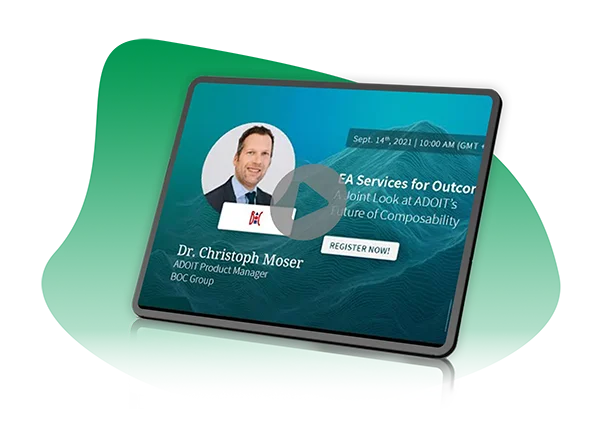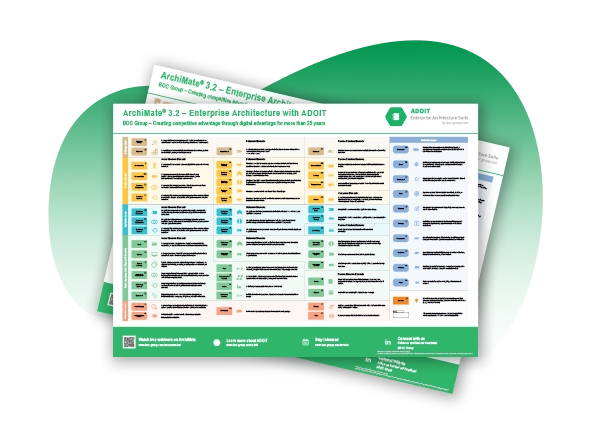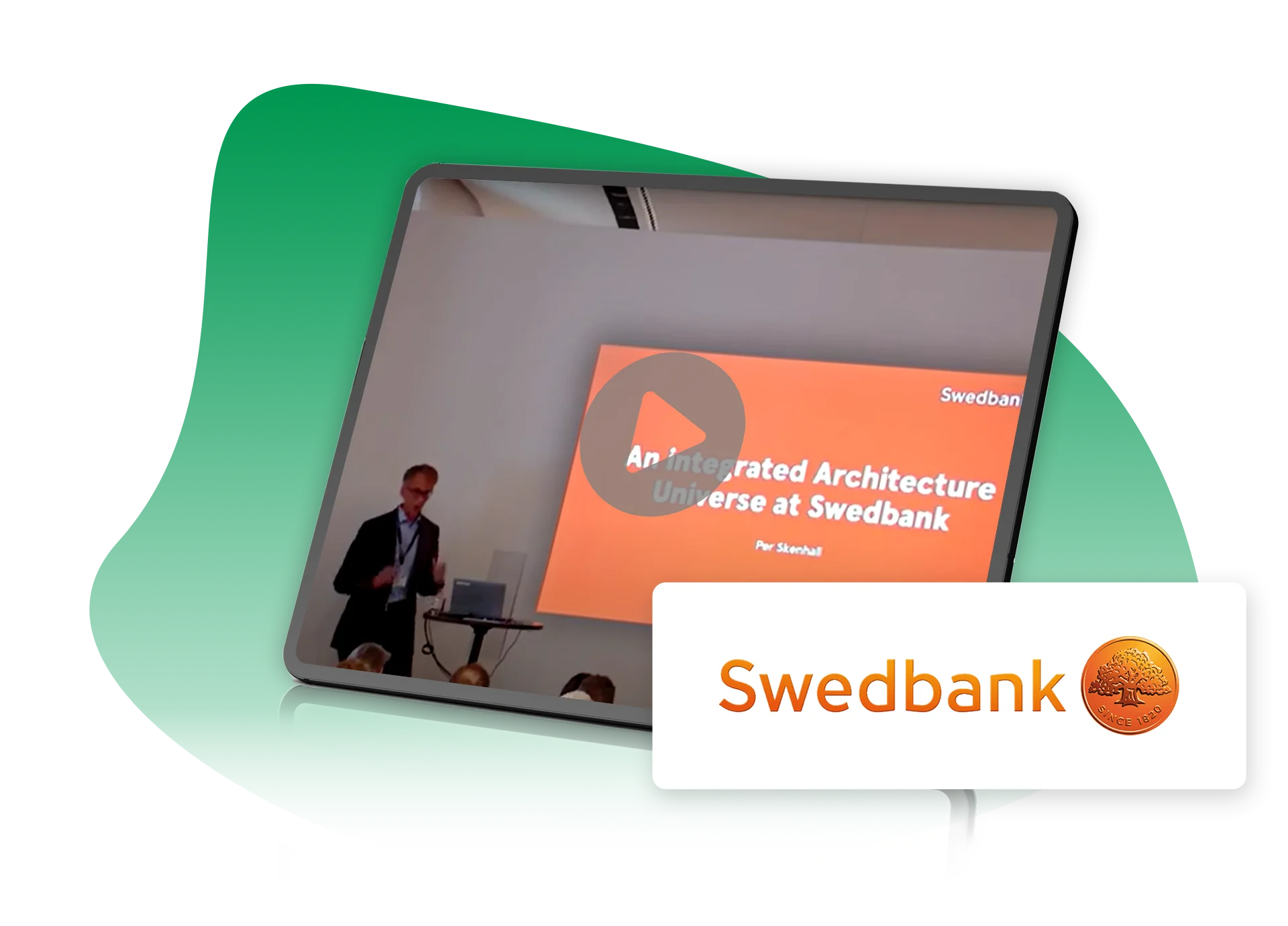Introduction
Today, it’s all about business transformation and the urge to make it happen. Transformations are necessary to keep pace with the ever-changing times and meet new requirements and challenges.
The foundation for managing such change processes lies in Enterprise Architecture. EA represents the structure and connections inside your company. It forms the basis for your strategic business planning and the development of the supporting information technology.
In this blog post, you’ll learn everything you need to know about EA and how it can help you keep up with the constantly evolving business requirements.
What is business transformation? And how is it related to EA?
Simply put, business transformation is a process of advancing from an organization’s vision to a concrete strategy. To deliver this change successfully, there is a need for a structured approach that
- creates a single source of truth: the big picture that describes what your organization will be like in several years
- provides direction: i.e., clarifies the right path of change to ensure that all stakeholders move forward jointly
- aligns business and IT departments: It inspires everyone to act in a certain direction
And all of this is enabled by Enterprise Architecture. EA helps businesses embrace transformation by holistically covering all levels of change: from strategy and business levels to the application, data and technology layers of the organization.
Through EA, you are aware of your company’s entire architecture ecosystem at any given point in time:
- What capabilities does your organization have or want? Are they threatened in any way?
- How are these capabilities realized? By which business actors? Through which system software/application components? Should they be updated?
- What happens to the data that has been collected over time? How can you use this data to your advantage?
- And most importantly – how are these questions connected?
Essentially, what we like to say is that Enterprise Architecture helps you create a digital twin of your organization.

Components of a company’s ecosystem
What is Enterprise Architecture (EA)?
Enterprise architecture focuses simultaneously on business and IT components and creates an overview of the current state of an organization. This means that all available resources such as applications, data, business objects, etc. and the relationships between them are mapped to create a view for all stakeholders involved. This way, the executives involved are well-informed and able to identify the direction of changes that need to be made in order to make the right business transformations to achieve the desired business visions and outcomes. This may include a better customer experience, sustainable business models or simply a restructured application landscape.
In a nutshell: it’s about creating a vision for the company and managing the changes necessary to realize that vision. This takes into account not only the company itself, but also the ecosystem in which the company is embedded. The description of the target architecture helps to understand how the company needs to develop in order to achieve its strategic objectives.
To achieve these goals, companies must first identify their critical business drivers. Then they need to consider how to respond to these drivers and how to translate these actions into blueprints – the so-called enterprise architecture designs.
What are the benefits of Enterprise Architecture?
If you use Enterprise Architecture, you can benefit from the following advantages:
Convenient change in business model
EA supports the transition to new business models or the transformation of existing business models. It helps to combine people, processes, information and technology into organizational capabilities.
Aligning business resources and IT investments with business strategy
EA supports organizations to invest in the right initiatives and ensures that the right resources are available.
Building organizational resilience
At its core, it is all about business agility. Enterprise Architecture helps organizations to respond effectively to changing markets and customer environments and defining organizational structures and IT platforms that enable this flexibility.
Innovation management
EA helps strategy and leadership teams discover and evaluate innovation opportunities across all levels of the organization.
Sustainability
EA is at the heart of any business transformation and can thus drive your organization’s Environmental-Social-Governance (ESG) initiatives.
Reducing IT complexity
Complex systems that are difficult to manage slow down the needed digital transformation. EA reduces system complexity by identifying and decommissioning IT services that are not contributing to the organization’s goals.
Reducing technological risk and increasing security
EA provides insights into the interdependencies between business and IT to take action against cybersecurity breaches.
Reducing IT costs
Reducing It costs by eliminating redundancies and breaking down organizational silos
EA helps to address cost pressures by identifying savings opportunities.
… and many more
However, before pursuing one or more of these goals, it is important to consider what business objectives the EA will serve and how success will be measured.











